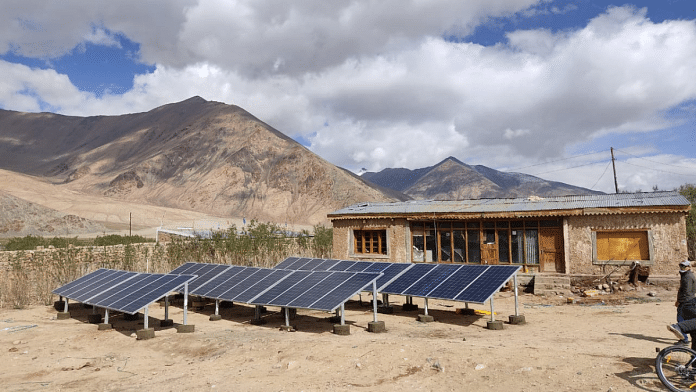New Delhi: Ahead of the India Energy Week beginning Monday in Bengaluru, the International Energy Agency (IEA) said adopting India’s Lifestyles for Environment (LiFE) initiative could help reduce global carbon dioxide emissions by more than 2 billion tonnes in 2030, about one-fifth of the emission reduction needed to be on the pathway to global net-zero emissions.
Launched by Prime Minister Narendra Modi at COP26 in Glasgow in November 2021, the LiFE initiative is aimed to encourage sustainable lifestyles in the country and to tackle the challenges of environmental degradation and climate change globally.
India, the third largest national market globally for renewables, has already integrated several policies in its energy transition strategy and is currently 10 per cent more energy efficient than both the international and G20 average, the IEA said in its latest report released Monday.
“India’s G20 Presidency this year represents a unique opportunity to globalise the LiFE initiative – providing a knowledge-sharing platform for other leading economies to realise the impact that LiFE’s recommendations can have in the fight against climate change, air pollution and unaffordable energy bills. Since the G20 makes up nearly 80 per cent of global energy demand, meaningful changes by its members can make a big difference,” IEA executive director Fatih Birol said.
In recent years, India has also seen a rise in consumer-centric solutions like distributed solar photovoltaic (PV) systems, with rooftop solar growing 30-fold in less than 10 years. Sales of electric vehicles have also tripled from 2021, making up almost 5 per cent of the market share in 2022.
Also Read: Why govt panel axed Arunachal hydropower project — ‘local uproar, state’s poor green track record’
Bridging rich-poor divide
According to the ‘LiFE Lessons From India’ report, measures under the LiFE initiative include those to address sanitation, clean cooking challenges, reduce waste and plastic usage, promote healthy lifestyles and adopt sustainable food systems as well as promoting energy efficient practices such as use of public or active transport, adopting energy efficient appliances, installing rooftop solar panels and practising fuel-efficient driving. The agency estimates that such measures could help consumers save roughly $440 billion in 2030.
Furthermore, such measures can also help lower inequalities in energy consumption and emissions between developing and developed countries. The reductions in per capita carbon dioxide emissions due to LiFE measures in advanced economies by 2030 are three to four times greater than in emerging markets and developing economies.
While these LiFe measures can be implemented in day-to-day life by both individuals as well as companies and institutions, the IEA estimates that roughly 60 per cent of reduction in emission can be directly influenced by governments.
Even as LiFE’s sustainability measures are being carried out by citizens, government bodies can further facilitate this process through transparent and consistent policy support and messaging such as introducing low-emission zones in cities or supporting consumer investments in clean energy technologies.
India’s G20 presidency can further strengthen PM Modi’s LiFE initiative by anchoring it in the G20’s current framing of energy transitions to gather experience on successful policies that group members are already conducting, the IEA said.
(Edited by Tony Rai)
Also Read: India’s subsidies for renewable energy nearly doubled in 2021 fiscal after 4-yr lull, report finds



